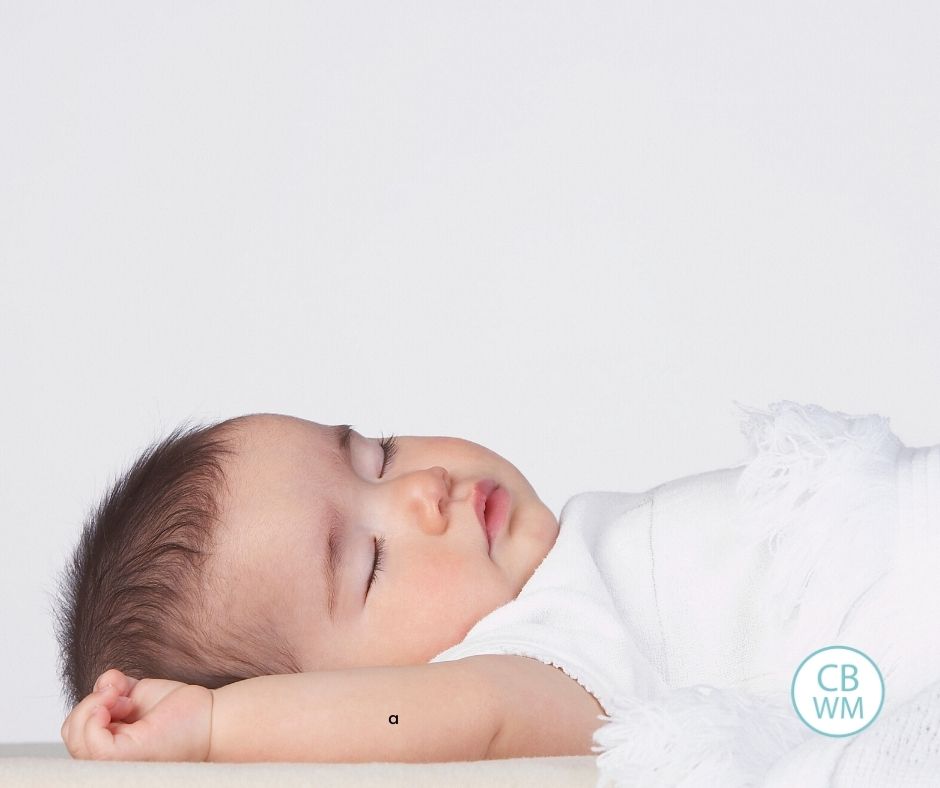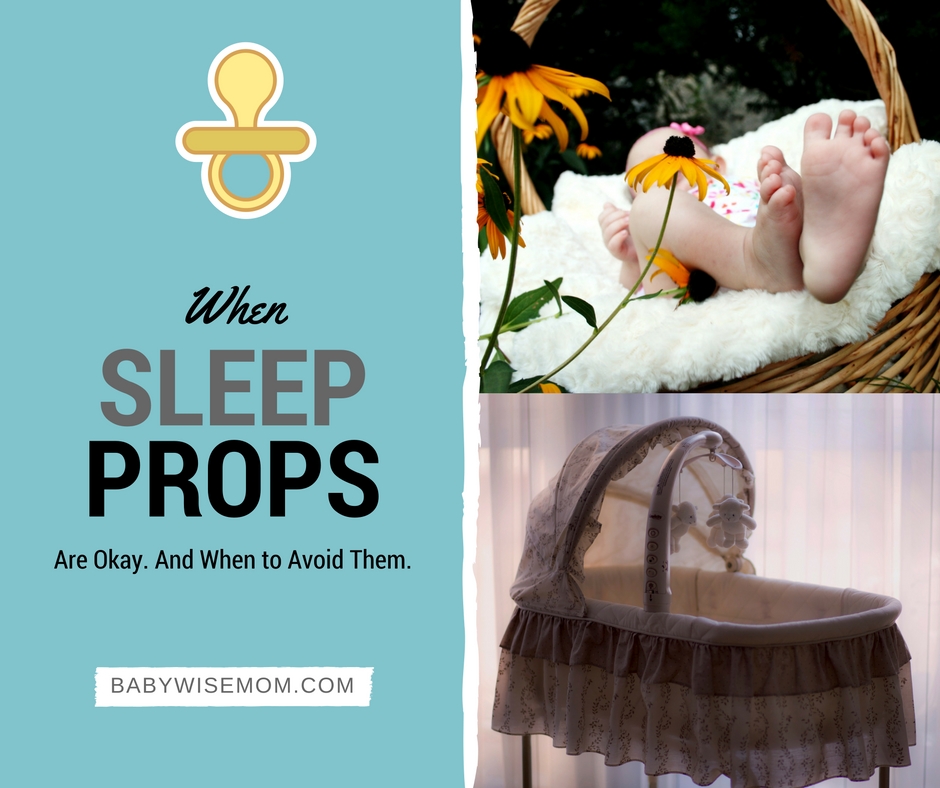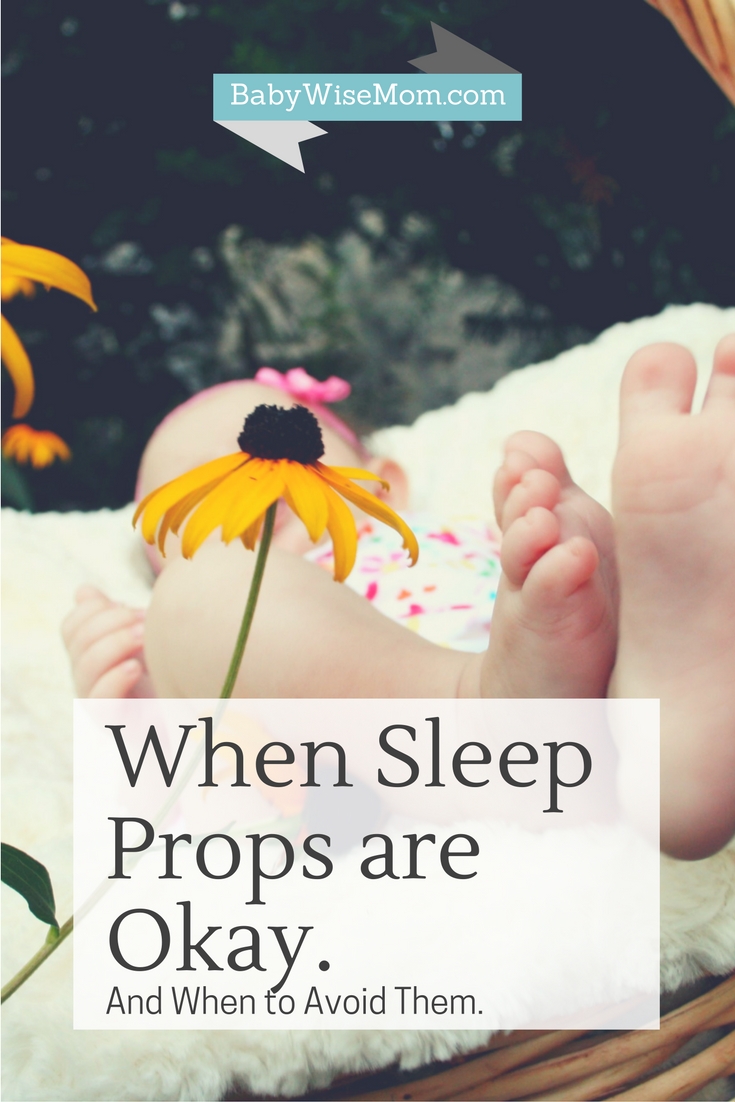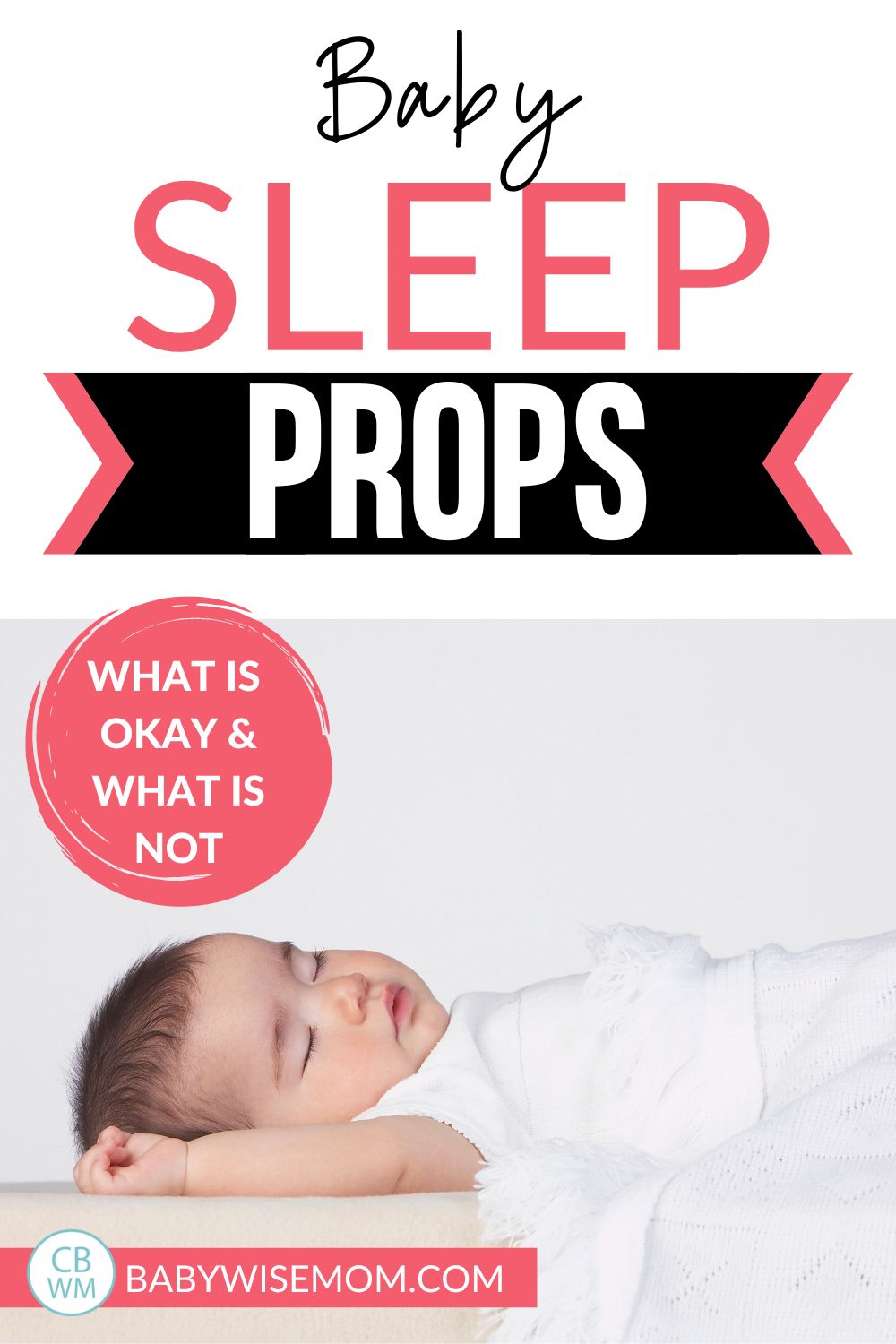Find out when it is kay to use sleep props for baby and when you should avoid sleep props. This will help establish solid sleep. Get a list of examples of sleep props and when they are okay to use and when you should avoid using them.

One of the cardinal rules for teaching your child to be a good sleeper is to avoid sleep props. Sleep props can create dependence that makes it hard for the child to sleep soundly, and if you ever get caught without the sleep prop, sleep will likely be impossible to attain.
Sleep props can cause such problems that you might think you should never, ever, ever go near one.
That line of thinking is not correct.
There are times a sleep prop is necessary given the circumstances. There are times what you might think of as a sleep prop should really be looked at as a sleep aid.
There are times when a sleep prop is really a necessary tool to help your baby sleep.
Post Contents
- Sleep Prop Examples
- Sleep Props That Definitely Help
- Swaddle
- Sound Machine
- Blackout Curtains
- Sleep Positioner
- Lovey or Blanket
- Sleep Props that Can Help But Can Also Hurt
- Sleep location other than crib (swing, rock and play, wrap…)
- Pacifier
- Rocking or bouncing baby to sleep
- Nursing baby to sleep
- Conclusion
- Related Posts
Sleep Prop Examples
Here is a list of common sleep props. Not all people would view all of these as sleep props, but they are all a prop in some way:
- Swaddle
- Sound machine
- Sleep positioner
- Sleep location other than crib (swing, rock and play, wrap…)
- Pacifier
- Rocking baby to sleep
- Nursing baby to sleep
- Blackout curtains

Sleep Props That Definitely Help
All of the sleep props have a time and place they are needed. Some even have an extended period of time that they are useful. Let’s discuss them. This post may contain affiliate links which won’t change your price but will share some commission.
Swaddle
I didn’t swaddle my firstborn, and boy, after doing it with my girls, I would absolutely swaddle Brayden if I did it all over again.
Swaddling helps prevent a baby from waking herself up by sudden, jerky movements. That means baby will sleep better with a swaddle.
This isn’t to say every person swaddles. It is okay if you don’t.
If you do swaddle, there is no need to stress over the swaddle being a “prop.”
When your child is ready to drop the swaddle, it is a smooth process. If you have to drop before your baby is ready for dropping, you might have a few rough days.
Using a swaddle will not create a child who can’t sleep independently. It is a prop that most babies naturally and easily transition from. The rest require minimal crying.
Once you do move out of a swaddle, sleep sacks are a great way to keep baby feeling cozy and also staying warm enough.
See Dropping the Swaddle for more.
Sound Machine
I was definitely a parent who worried about the detrimental effects of sleep props when I had my first baby.
We lived in a studio apartment essentially (long story–remodeling a house, only the main level was done–no rooms, just open concept. So we all slept and lived in the same big room). So Brayden napped in the room with me.
If I wanted to do anything, it was with him right there. And yet I was so afraid of props that I never considered white noise.
It wasn’t until I had more children that I accidentally realized the benefit of white noise. We used a humidifier because we live in a dry climate. I noticed that when the humidifier was on, it helped block out other noise.
Well, when you have a baby and a toddler, there is a lot of noise for that baby! So we did humidifiers. And when the humidifier wasn’t needed, we went to official sound machines.
Today, each of my girls has a sound machine in her room. When we travel and don’t have a sound machine, it isn’t a problem. They can all sleep without the sound machine.
The sound is a comfort to them, but it isn’t addictive. We use Dohm and have really liked them.
Blackout Curtains
These help block light for any baby who won’t sleep well with the sun out. With blackout curtains, baby can sleep in a dark room.
Some babies rise with the sun, and if you live somewhere like I do where the sun is up at 5 AM in the summer, that isn’t fun.
Many won’t fall asleep if it is bright outside. This is all common because the sun controls the release of melatonin. Blackout curtains can greatly aid in getting better sleep. Read Blackout Curtains to Help Baby Sleep Better
Sleep Positioner
A sleep positioner can be very handy for a baby with reflux or a baby who needs more comfort. This can be really common for newborns.
We used a crib wedge to help prop Kaitlyn up since she had reflux. We also used a SnuggleU with each of our girls (this is something we created, again, to help with Kaitlyn’s reflux. They had something similar in the NICU and we wanted her to have one at home). Just like the sound machine, sleep positioners are not addictive. They just help a difficult sleep situation.
Lovey or Blanket
If you have an older baby, a lovey or blanket can be a positive sleep association for your child.
This is something that could become a sleep prop at some point, but most children naturally ditch the lovey as they get older.
Make sure you do not add a lovey or blanket until your child is old enough. The recommendation for this is not until 12 months old or older.
Sleep Props that Can Help But Can Also Hurt
All sleep props will help baby sleep better initially, but some become such strong needs for the child that the lead to sleep issues and lots of wakings.
Sleep location other than crib (swing, rock and play, wrap…)
At times, a sleep location other than your baby’s bed might be necessary.
I found it necessary during witching hour. I found it necessary at times when Kaitlyn woke early from naps because of reflux pain. I found it necessary at times because I had older children to take care of and needed baby to sleep, no matter where, for the moment.
I also found it helpful when the baby was over-stimulated and needed to just sleep.
There are many situations when sleeping in a swing or in a wrap is needed and the best option.
What you want to avoid is it becoming the norm. You don’t want your baby unable to sleep without one of these props.
In Healthy Sleep Habits, Happy Child, Weissbluth talks about sleep in motion being less restorative than stationary sleep. That means quality sleep happens when the baby is motion less in the crib or bassinet.
Aim for sleeping in the crib, but do not fear sleep at times happening in an alternate location.
Pacifier
The pacifier can really cause a lot of sleep problems. It can also help babies sleep much better.
Some people like the pacifier just for the sake of avoiding finger or thumb sucking.
You can absolutely use a pacifier and know you will need to drop it someday, just like you need to drop a swaddle some day.
If your baby will have sleep issues associated with the paci, that usually comes around 3 months old. If you make it through 3 months old, you can probably use the paci without issue until your child is old enough to need to drop it.
The pacifier is one sleep prop I avoided. I would use one in public if the baby was fussy and wouldn’t sleep, but at home, I did not turn to it.
Many people manage pacifier use without it leading to long-term sleep problems. Many others try it and find their baby just won’t sleep soundly and through transitions (in other words, chronic short naps happening) until the pacifier is gone from their lives.
I have found that people who successfully use pacifiers seem to have in common that they have set rules. They don’t reinsert the pacifier over and over (and over again). It is more of a sleep aid for their baby than a sleep necessity.
With this simple rule, the baby is still able to work on self-settling and learn independent sleep skills.
>>>Read: Weaning from the Pacifier: When, Why, and How

Rocking or bouncing baby to sleep
You do not want to be rocking your baby to sleep every time sleep happens. If you are, that is a sleep prop that is addictive.
If your baby is having a rough time falling asleep but usually falls asleep pretty well, rocking is warranted.
If you have a baby with witching hour, rocking is a great way to get through it.
If you have a baby who is just overly tired and needs some help falling asleep, rocking can be great.
If you just want to rock your baby to sleep every once in a while, go for it.
If you want your baby to be able to fall asleep and stay asleep independently, do not rock every time it is sleep time. If you do, it will become a major sleep crutch and your child will struggle to fall asleep alone.
That means that every time your child has a sleep transition (every 45 minutes), your child is likely to wake up.
Nursing baby to sleep
Pretty much everything I said with rocking applies to nursing. I found nursing Brinley to sleep during the witching hour to be very helpful. That is the one time a day I did it, and it meant she went to sleep instead of crying and crying.
Once she outgrew witching hour, she outgrew the need to nurse to sleep.
If you feed your baby to sleep, you also risk your baby not getting a full feeding and needing to wake more often to eat more often.
Conclusion
Do not be afraid of sleep props for those special circumstances and every once in a while that they are needed.
Do be wary of them becoming a habit or a long-term need. Some props might be a habit and you might just decide you are willing to have that habit now and you will deal with the weaning of it at a later date.
That is fine–just be aware of the need for a weaning process down the road. Some might require some cry it out, while others can simply be outgrown.
Always remember my Sleep Hierarchy for Newborns. Sometimes a prop is just what your baby needs right now.
Related Posts
- How Pacifiers Might Be Ruining Your Baby’s Sleep
- How to Help Your Baby Sleep Better With Swaddling
- Benefits of White Noise for Baby Sleep
- Blackout Curtains to Help Baby Sleep Better

This post originally appeared on this blog in September 2016
